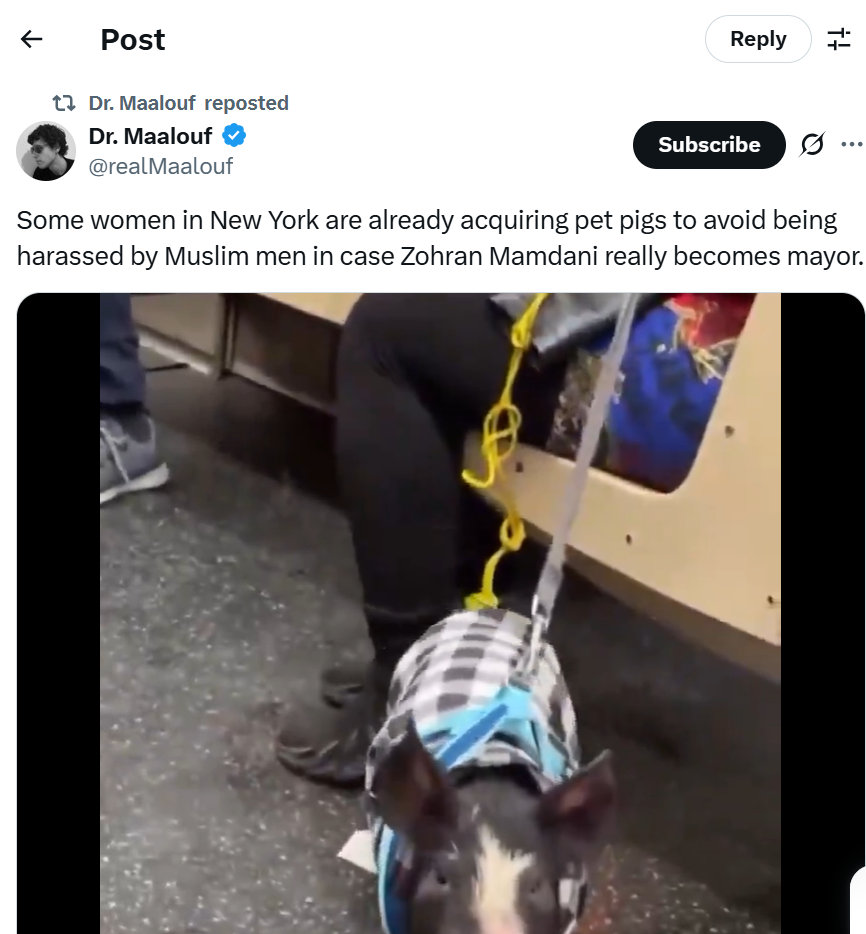
The video shows a pig, approximately the size of a small dog, navigating the subway car. It wears a blue harness and a black-and-white checkered coat, seemingly well-groomed and accustomed to public spaces. The owner, seated and holding the leash, appears unfazed by the unusual pet, while other passengers display a range of reactions from curiosity to indifference. The setting is typical of New York’s bustling transit system, with advertisements and the familiar orange seats framing the scene.
 The X thread reveals a polarized response. Some users, like The Immortal, draw parallels to France, suggesting a pattern of concern over Muslim immigration and its impact on public safety. Others, such as KoiNioꓘ, make light of the situation, comparing pigs favorably to humans in terms of cleanliness. The discussion extends to political commentary, with users like Ad-Hoc and Himanshu Singh offering satirical or critical takes on the implications of Mamdani’s potential mayoralty. The thread also includes references to european cities with Muslim mayors, hinting at perceived cultural shifts and security challenges.
The X thread reveals a polarized response. Some users, like The Immortal, draw parallels to France, suggesting a pattern of concern over Muslim immigration and its impact on public safety. Others, such as KoiNioꓘ, make light of the situation, comparing pigs favorably to humans in terms of cleanliness. The discussion extends to political commentary, with users like Ad-Hoc and Himanshu Singh offering satirical or critical takes on the implications of Mamdani’s potential mayoralty. The thread also includes references to european cities with Muslim mayors, hinting at perceived cultural shifts and security challenges.This incident highlights the intersection of pet ownership, public space, and political rhetoric. The presence of a pig on the subway, while legally permissible under New York City’s rules for service and emotional support animals, becomes a symbol in a larger debate about identity, safety, and governance. The fear of harassment, whether rooted in reality or perception, underscores the anxieties some residents feel about demographic changes and political leadership. It also raises questions about the role of social media in amplifying such fears and shaping public discourse.




 click and follow Indiaherald WhatsApp channel
click and follow Indiaherald WhatsApp channel